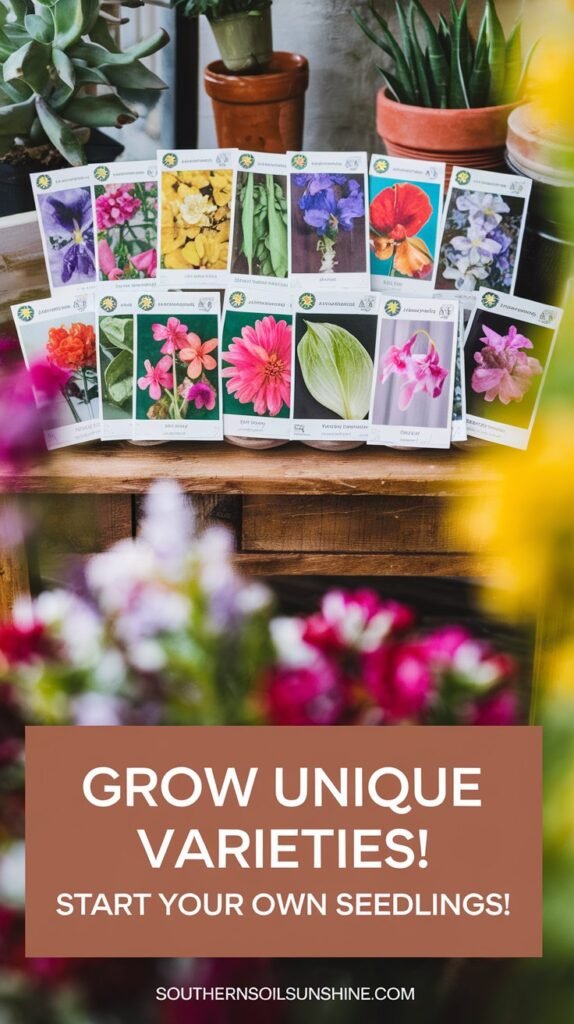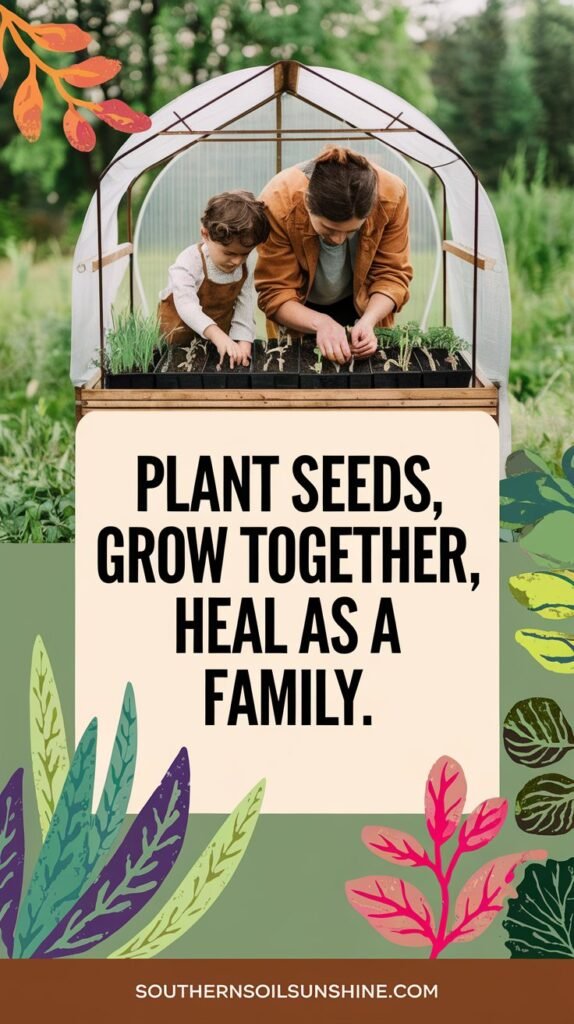10 Compelling Reasons to Start Seeds Indoors in 2025

Some of the links on this website are affiliate links, which means that if you make a purchase through these links, I may earn a small commission at no additional cost to you. As an Amazon Associate, I earn from qualifying purchases. I only recommend products I genuinely trust and believe will bring value to my readers. For more information, please visit the Privacy Policy page. Thank you for supporting my blog and helping me continue to provide valuable content.
Starting seeds indoors in 2025 can give your gardening game a serious boost, and here are ten reasons why you should jump on this trend! From giving you a head start on the growing season to saving money on plants, growing from seed offers tons of benefits. Plus, it’s a fun, rewarding way to bring more greenery into your life. Let’s dig in!
1. Longer Growing Season

One of the biggest perks of starting seeds indoors is the ability to extend your growing season. This is especially critical in warm climates like South Texas, where the summer heat can be unrelenting, cutting short the time for cool-season crops. By starting seeds indoors, you can give plants a head start, ensuring they’re ready to hit the ground running when outdoor conditions are just right. Imagine transplanting robust tomato or pepper seedlings in early spring while others are just sowing seeds directly—you’ve gained weeks of productive growth!
For gardeners in USDA Zone 9, where frost dates come early, seed starting means you’re always ahead of the game. For example, instead of waiting until March to sow cucumbers, start them in mid-January indoors. This ensures you’re harvesting crisp cucumbers in late spring before the sweltering summer makes pollination tricky. Extending your growing season is like having a head start in a marathon—it keeps you ahead of challenges. For gardeners in other zones, with a shorter growing window, seed starting is even more essential. It allows you to hit the ground running with strong healthy seedlings as soon as the weather allows!
2. Cost Savings

If you’ve ever filled a cart with nursery seedlings, you know how quickly costs can add up. Starting seeds indoors is a budget-friendly alternative that stretches your gardening dollar. A single packet of seeds can yield dozens of plants, meaning you’re paying mere cents per seedling instead of $3 to $5 each at the store. For example, one $2.50 packet of lettuce seeds can produce enough greens to fill an entire garden bed multiple times throughout the season.
This cost-effectiveness is even more striking when you consider the long-term savings. Investing in reusable trays, grow lights, and quality soil mix upfront ensures you have everything needed to start seeds year after year. Over time, these tools pay for themselves while reducing your dependence on costly retail plants. Plus, it’s a joy to watch your garden flourish knowing you’ve grown it from scratch.
3. Greater Variety Selection

Browsing seed catalogs can feel like discovering a treasure trove of possibilities. When you start seeds indoors, you’re not limited to the handful of plants available at local garden centers. Whether it’s a rare heirloom tomato or a heat-tolerant melon that thrives in subtropical climates, seed starting unlocks access to a world of flavors, colors, and textures. For example, varieties like ‘San Marzano’ tomatoes or ‘Moon and Stars’ watermelons bring unique elements to your garden—and your table.
Additionally, seed starting empowers you to grow plants tailored to your climate and taste preferences. Want a basil that doesn’t bolt in Texas summers? Try starting seeds of ‘Everleaf Thai Towers.’ This freedom to experiment ensures that your garden is not just productive but also a reflection of your personality and creativity. Seed packets cost far less than nursery plants, so trying something new becomes an exciting yet affordable adventure.
4. Control Over Growing Conditions

Seed starting indoors gives you the reins to create the perfect environment for young plants. Outdoors, seedlings face unpredictable weather, pests, and soil conditions that can stunt growth or cause outright failure. Indoors, you’re the gardener-in-chief, deciding everything from soil moisture to lighting duration. Grow lights mimic the sun’s intensity, heating mats maintain consistent warmth, and you control the watering schedule—no more worrying about surprise cold snaps or torrential rain!
For example, a study by the University of Minnesota found that seedlings grown under consistent conditions indoors had a 30% higher transplant success rate compared to those started outdoors. This level of control also makes indoor seed starting ideal for beginners who want to minimize risks. As your confidence grows, you’ll find that controlling these variables becomes second nature, paving the way for gardening success year-round.
5. Succession Planting Opportunities

Starting seeds indoors makes succession planting—the practice of staggering crops—a breeze. Instead of planting everything at once and facing a glut of produce, you can sow seeds every few weeks to ensure a steady, manageable harvest. For example, start a batch of lettuce indoors in January, another in February, and a final one in March. This way, you’ll enjoy fresh salads all spring without the pressure of processing a mountain of greens at once.
In warm climates, succession planting is particularly helpful for managing the challenges of seasonal transitions. By starting seeds indoors, you can have cool-weather crops like broccoli ready to plant immediately after summer crops like tomatoes are pulled. This seamless handoff keeps your garden productive year-round.
6. Disease Prevention

One of the silent killers of young plants is soil-borne diseases like damping-off, a fungal issue that can decimate seedlings before they even get a chance to thrive. When you start seeds indoors, using sterile seed-starting mix and clean containers, you drastically reduce the risk of such problems. This controlled environment acts as a protective bubble, shielding your seedlings from pathogens lurking in garden soil.
In warm climates where pests are active year-round, starting seeds indoors also offers a reprieve from leaf miners, aphids, and other nuisances that love tender seedlings. By the time your plants are strong enough to move outdoors, they’re better equipped to resist diseases and pests. It’s like giving your garden a health insurance policy from day one.
7. Gardening in Urban Spaces

For those with limited outdoor space, starting seeds indoors is a game-changer. Whether you have a small patio, balcony, or even just a sunny windowsill, seed starting allows you to grow plants that can later be transferred to containers or vertical garden setups. This is particularly useful for urban gardeners who dream of lush, productive spaces despite spatial constraints.
Consider a windowsill herb garden: starting seeds of basil, parsley, and cilantro indoors ensures you’ll always have fresh herbs at your fingertips. With some creativity, even the tiniest apartment can become a haven for thriving greenery, proving that gardening is accessible to everyone, no matter the space.
8. Customization for Local Climate

Starting seeds indoors allows you to tailor your garden to your specific climate. In Zone 9, where winters are mild and summers intense, timing is everything. By starting seeds indoors, you can grow crops that align perfectly with your region’s growing conditions. For example, start heat-loving crops like eggplants indoors in February, so they’re ready to hit their stride as temperatures climb in April.
This customization also means you can grow crops that might struggle under direct sowing conditions. Delicate seedlings like peppers or lettuce benefit from the controlled environment of indoor seed starting, allowing them to reach a healthy size before facing outdoor challenges.
9. Earlier Harvest

Who doesn’t love beating the clock? By starting seeds indoors, you can enjoy earlier harvests, giving you a jumpstart on seasonal favorites. For instance, tomatoes typically take 6-8 weeks to grow from seed to transplant size. If you start seeds indoors in January, you could be harvesting ripe, juicy tomatoes by late spring while others are just seeing their first blossoms.
Earlier harvests also mean you’re less likely to lose crops to heat waves, pests, or other late-season challenges. By the time summer’s intensity peaks, your plants will already be winding down their first round of productivity, making room for second-season crops.
10. Educational and Therapeutic Benefits

Gardening is often described as food for the soul, and seed starting is no exception. Watching seeds sprout and grow into healthy plants is a deeply rewarding experience that connects you to nature and the cycle of life. It’s also a fantastic educational opportunity for kids and adults alike. By starting seeds indoors, you learn about plant biology, environmental factors, and the intricacies of gardening in a hands-on way.
Beyond the learning aspect, seed starting is an excellent stress reliever. Studies have shown that interacting with plants reduces cortisol levels, improving mood and mental health. On a rainy day or during the off-season, nurturing seedlings indoors offers a little slice of tranquility—a gift you give yourself while preparing for a bountiful garden ahead.








One Comment